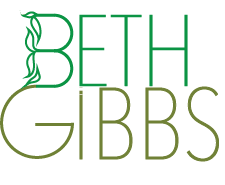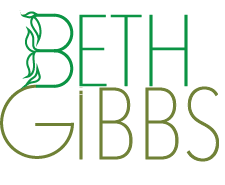ENLIGHTEN UP! a blogSelf-awareness stories: lighting our way to clarity, contentment and resilience in a complicated world.
|
 In my last post, I explored Step 1: The Body. In this post we’ll explore Step 2: Becoming aware of your breath and energy states. Practicing this step will help improve your overall well-being. The Taittiriya Upanishad, the philosophical and spiritual source of this contemporary view of self-awareness has this to say about breath and energy. “Man and woman, beast and bird live by breath Breath is therefore called the true sign of life. It is the vital force in everyone That determines how long we are to live. Those who look upon breath as the Lord’s gift Shall live to complete the full span of life.” —The Upanishads, translation by Eknath Easwaran In their book, Science of Breath, Swami Rama, Rudolph Ballentine, MD and Alan Hymes, MD call breath/energy (prana), “ the vital link between mind and body.” Breath/energy are integrated and inseparable even though we separate them to define, discuss, explain, and explore. Breath and Breathing Breath is the aspect of this step that is, perhaps, the most ‘real’ – meaning that it is firmly rooted in the material world. Most of us are familiar with the major parts of our respiratory system; nose and nasal cavity, mouth, throat, trachea, lungs and the muscles of respiration. Breathing is a life giving activity that happens whether we pay attention to the process or not. Becoming aware of our breathing and learning to breathe deeply and efficiently is one of the most important practices we can incorporate into our daily lives for optimal health. When we do point the light of self-awareness toward our breath we begin to develop awareness of the other aspect of this step; our energy. Energy Our energy is that invisible vital life force that animates us at all levels. It gives us the power to think, create, move, work, live and love. Energy flows to, from, and through the body interpenetrating all of our physical systems. Some of this energy can be scientifically measured. For example electrical brain activity is measured with an EEG (electroencephalogram) and heart activity with an ECG (Electrocardiograph). Other aspects of energy remain in the subtle realm. Eastern healthcare practitioners and philosophers consider these subtle energy fields to be a complex phenomenon that impacts breath, the act of breathing, our overall health and our relationship to our environment. We can sense it, feel it and some people claim to be able to see it but as yet, it has not been measured by scientific instruments. Direct experience of the energy aspect of this layer of self-awareness remains in the subtle realm for most of us until practice or grace renders it noticeable. This may be because most of us can’t ‘see’ our energy but with practice and awareness, we can learn to detect it in basic ways through our breathing patterns or becoming aware of times of the day when we are most alert, energized and motivated or tired, over-stressed and fatigued. When we detect an imbalance we can make an effort to address it, do what we can to change it, manage it or ultimately, if need be, accept it. For example, sometimes we need to transform our energy, light our fire and give ourselves an energy boost. To light your fire, think “move, stimulate, and energize.” On the other end of the energy spectrum we may need to transform our energy in order to slow down, calm down and relax. Here are two breath practices that may help with both of these energy states. Light Your Fire with The Breath of Joy The Breath of Joy is from the Kripalu Yoga tradition and the instructions below are from a Yoga International article, “Breath of Joy,” by Amy Weintraub, a leader in the field of yoga and emotional health This practice is typically done in a standing position but is easily modified for sitting in a chair. Caution: This practice may not be appropriate for those with high blood pressure or who suffer from eye or head injuries. The purpose of The Breath of Joy is to energize the body by increasing oxygen levels in the bloodstream, temporarily stimulating the sympathetic nervous system, and focusing the mind. Here are Amy’s instructions: To practice Breath of Joy, stand with your feet shoulder-width apart and parallel, knees slightly bent. 1. Inhale one-third of your lung capacity and swing your arms up in front of your body, bringing them parallel to each other at shoulder level, with palms facing the ceiling. 2. Continue inhaling to two-thirds capacity and stretch your arms out to the side like wings to shoulder level. 3. Inhale to full capacity and swing your arms parallel and over your head, palms facing each other. 4. Open your mouth and exhale completely with an audible ‘ha,’ bending the knees more deeply as you sink into a standing squat and swing your arms down and back behind you like a diver. Repeat up to nine times. Don’t force or strain the body or breath; simply be absorbed by the peacefully stimulating rhythm. Return to standing. Close your eyes and experience the effects. Notice how quickly your heart beats; feel the sensations in your face and arms, and the tingling in the palms of your hands. Slow the Burn with the Relaxation Breath Relaxation Breath is an effective technique you can do anytime and anywhere. It’s a breath technique that does four things at the same time. It:
Instructions 1. Sit with your spine comfortably aligned. 2. Soften your chest and shoulders. 3. Close your eyes or keep them slightly open with a downward gaze. 4. Inhale normally. Exhale normally. 5. After exhaling, hold your breath out and silently count “one thousand one, one thousand two.” 6. Repeat steps 4 & 5 and continue for 2-3 minutes or longer if you are comfortable. With awareness of your breath and energy states you are more likely to find yourself feeling stable, grounded and balanced between alertness and relaxation. The next post in this series will cover Step 3. Identify your thoughts and feelings. Comments are closed.
|
Archives
July 2024
AuthorBETH GIBBS started her yoga practice in 1968, four months after her son was born and she’s been practicing ever since. She currently teaches all levels therapeutic yoga classes for adults, and specialty classes for seniors in the Hartford, Connecticut area. Beth is a certified yoga therapist through the International Association of Yoga Therapists and is guest faculty at the Kripalu School of Integrative Yoga Therapy. She writes for the blogs, Yoga for Healthy Aging, and Accessible Yoga. Her master’s degree from Lesley University in Cambridge, MA is in Yoga Therapy and Mind/Body Health. Categories |
|
|
Enlighten Up! a Blog
|
Copyright © 2023 Beth Gibbs

 RSS Feed
RSS Feed
